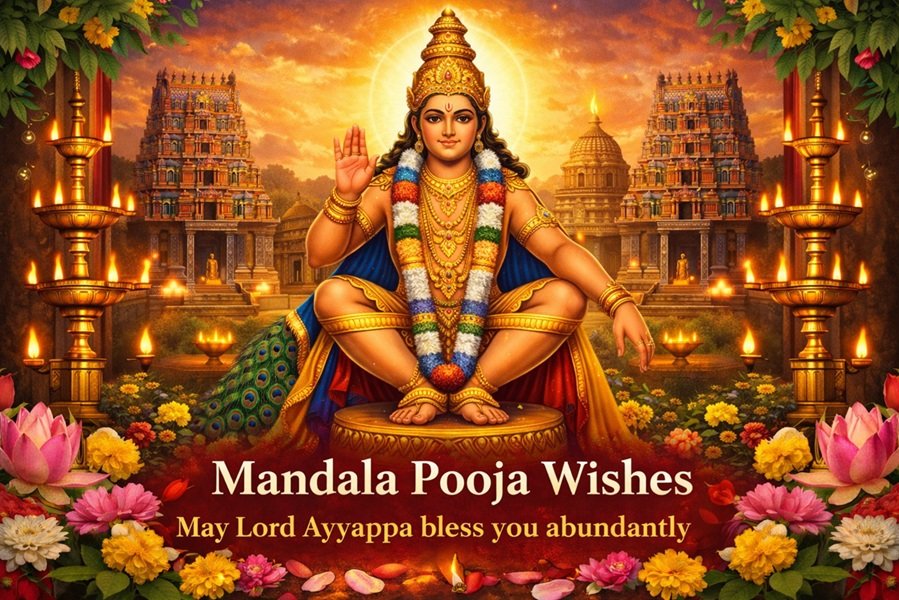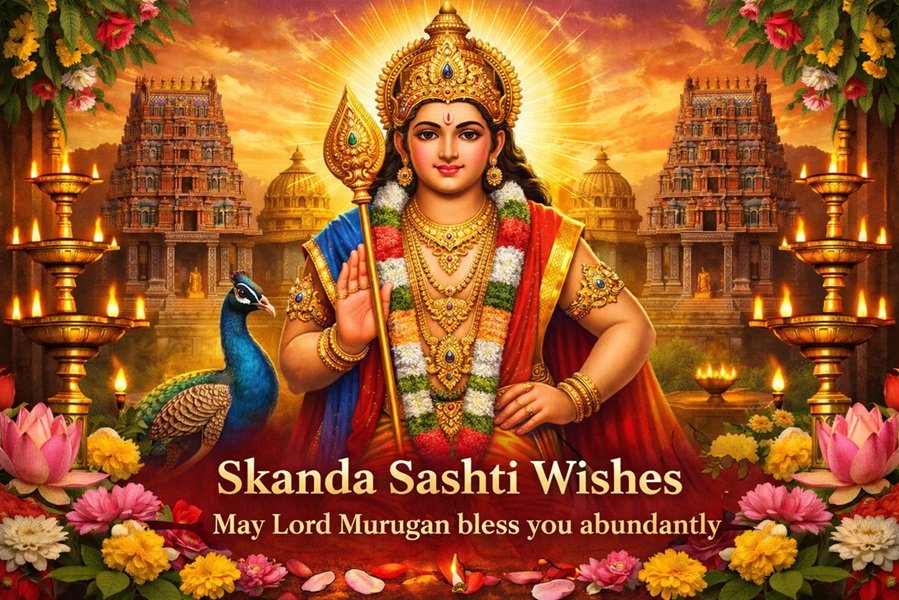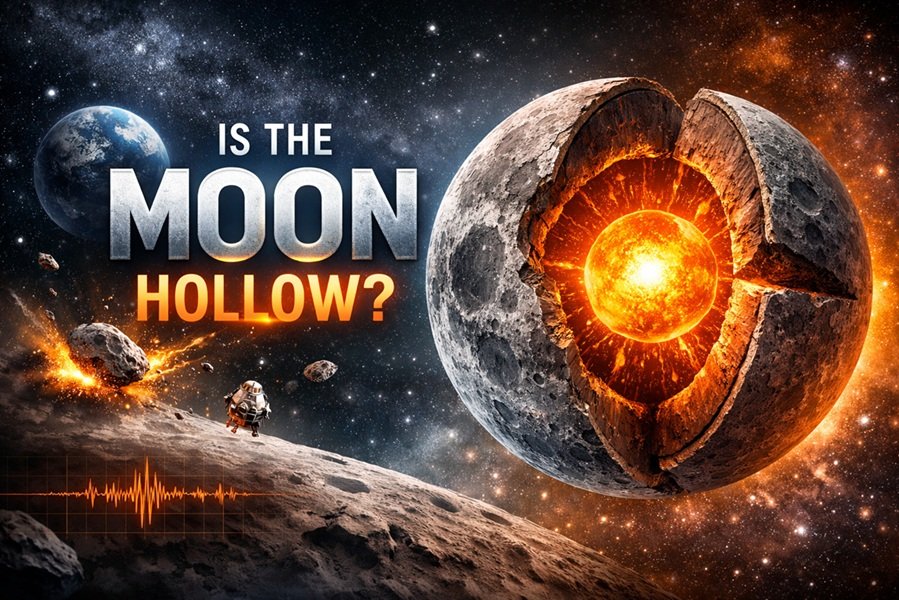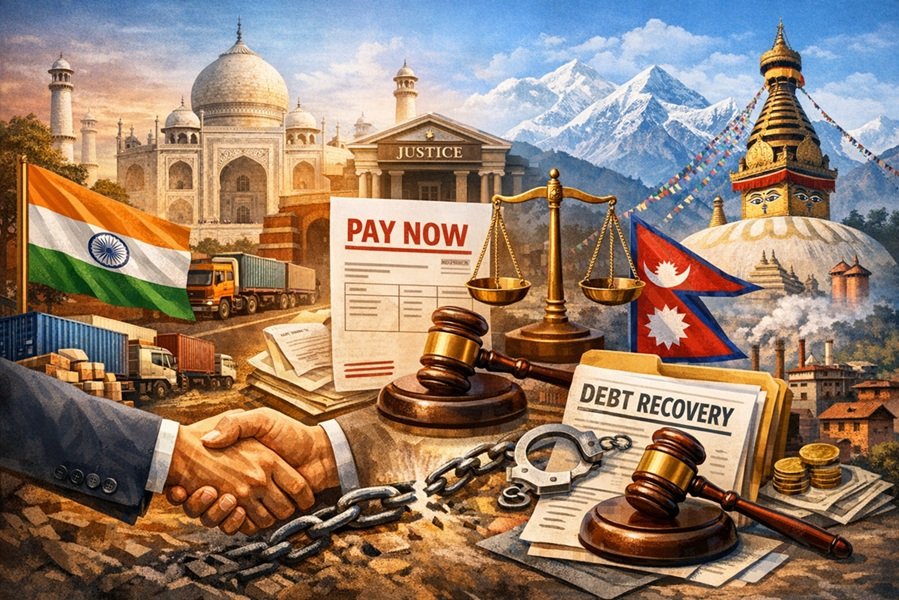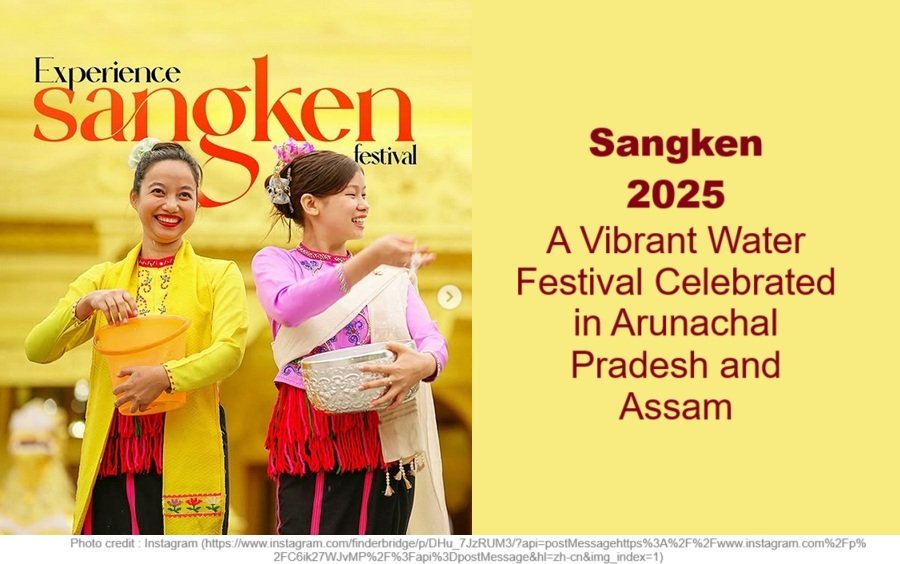
Sangken is a vibrant and joyful three-day water festival celebrated by the Theravada Buddhist communities in Arunachal Pradesh and parts of Assam, India. Rooted in deep cultural and spiritual traditions, this festival marks the traditional New Year and is observed with rituals of purification, water splashing, and prayers. In 2025, Sangken will be celebrated from April 13th to 16th, coinciding with similar New Year celebrations across Southeast Asia.
Significance of Sangken Festival
The Sangken festival holds religious, cultural, and seasonal significance:
- New Year Celebration: It marks the traditional Lunar New Year of the Theravada Buddhist calendar, which usually falls in mid-April.
- Purification Rituals: The sprinkling of water symbolizes the washing away of sins, bad luck, and past misdeeds to usher in a fresh beginning.
- Tribute to Lord Buddha: Sangken is an occasion to offer prayers and cleanse Buddha statues as a mark of reverence.
- Cultural Unity: It reinforces social harmony and communal ties, with people coming together regardless of caste, creed, or age.
Where is Sangken Celebrated?
Sangken is mainly celebrated by Theravada Buddhist tribes such as the Khamti, Singpho, Tai Phake, Tai Khamyang, and Tai Ahom communities in the following regions:
- Arunachal Pradesh: Especially in Namsai, Changlang, Lohit, and Dibang Valley districts.
- Assam: Parts of upper Assam including Tinsukia, Dibrugarh, and Dhemaji where Tai Buddhist communities reside.
Sangken 2025 Dates
For 2025, the Sangken Festival will be celebrated from:
📆 April 13 (Sunday) to April 16 (Wednesday), 2025
Important Ritual Days:
- April 13 – Start of Sangken (Pulling out Buddha statues, building temporary prayer halls)
- April 14 & 15 – Water splashing, cleansing rituals, public celebrations
- April 16 – “Poi Sangken” or the first day of the New Year after Sangken, marked by prayers and family gatherings
Rituals and Traditions of Sangken
1. Lung Phra (Cleansing of Buddha Images)
The festival begins with the ceremonial removal of Buddha statues from temples and placing them in temporary bamboo structures known as “Kyongfra”. Devotees pour scented water over the images to symbolize purification and seek blessings for the coming year.
2. Water Splashing
The most iconic part of Sangken is the joyous water-splashing ritual, where:
- Devotees splash water on each other as a blessing
- Vehicles and homes are sprinkled with water for cleansing
- Streets become vibrant venues of fun, dance, and music
This reflects spiritual cleansing, joy, and togetherness.
3. Community Feasts and Dance
People wear traditional dresses and prepare special dishes. Community feasts and cultural programs showcasing local folk dances, drums (Pong), and songs mark the evenings.
4. Offering Alms to Monks (Tak Bat)
Devotees offer food and other essentials to monks (Bhikkhus), promoting the Buddhist virtues of Dana (charity) and Metta (loving-kindness).
5. Poi Sangken Day
The day following the water festival is observed as “Poi Sangken”, the actual start of the New Year. People visit temples, light incense, chant prayers, and seek divine blessings for prosperity and peace.
Special Food Prepared During Sangken
Sangken is also a festival of culinary joy. Some common festive foods include:
- Khao Lam (bamboo sticky rice)
- Mo Nam (traditional Tai soup)
- Khao Tom (sweet rice dumplings)
- Locally brewed rice beer
These are shared joyfully among families and visitors.
Sangken and Southeast Asian Connection
Sangken shares cultural and spiritual similarities with Southeast Asian New Year celebrations such as:
- Songkran – Thailand
- Thingyan – Myanmar
- Pi Mai – Laos
- Chaul Chnam Thmey – Cambodia
All these festivals are based on the Theravada Buddhist lunar calendar, signifying renewal and purification through the element of water.
How Sangken is Celebrated in Arunachal Pradesh Today
Modern celebrations in Arunachal Pradesh have become larger, with:
- Public processions and parades
- Temporary stalls selling traditional clothes, food, and artifacts
- Cultural exchanges and tourism initiatives
The town of Namsai is especially known for its grand Sangken celebrations, attracting tourists from all over India and abroad.
🌺 Cultural Importance in Modern Times
In a world filled with noise and chaos, Sangken remains a symbol of peace, mindfulness, and spiritual rebirth. It encourages:
- Respect for tradition and environment
- Peaceful coexistence and compassion
- Community bonding and hospitality
In many ways, Sangken reflects the Buddhist path of purification and joy, carried forward by proud indigenous communities in the Eastern Himalayas.
🧘 Final Thoughts
As Sangken 2025 approaches, it is an ideal time to reflect, cleanse, forgive, and begin anew. Beyond the festive water splashes lies a powerful message — to live with purity, joy, and harmony.
If you’re visiting Arunachal Pradesh or Assam during this time, don’t miss the chance to witness the vibrant colors, kind smiles, and spiritual richness of Sangken.
Featured image credit: Source: https://www.instagram.com/finderbridge/p/DHu_7JzRUM3/?api=postMessagehttps%3A%2F%2Fwww.instagram.com%2Fp%2FC6ik27WJvMP%2F%3Fapi%3DpostMessage&hl=zh-cn&img_index=1
